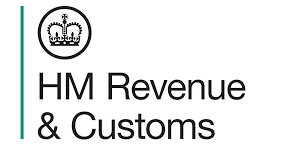HMRC SDLT: Surrender and Renewal of Lease: Example 6 – Scotland Tax Update
SDLTM18810 – Lease Surrender and New Lease Grant
This page discusses the surrender of an existing lease and the granting of a new lease to either extend the lease term or increase the rent. It provides an example to illustrate this process. Note that from April 2015, Stamp Duty Land Tax (SDLT) no longer applies to land transactions in Scotland, which are now subject to Land and Buildings Transaction Tax.
- Surrender of an existing lease
- Granting of a new lease
- Extending lease term or increasing rent
- Example provided for clarity
- SDLT replaced by Land and Buildings Transaction Tax in Scotland from April 2015
“`

Read the original guidance here:
HMRC SDLT: Surrender and Renewal of Lease: Example 6 – Scotland Tax Update
Understanding SDLT and Lease Transactions
What is SDLT?
Stamp Duty Land Tax (SDLT) is a tax paid when you purchase property or land over a certain price in the UK. This tax applies to the value of the property that exceeds a specific threshold. The rates can vary based on the property value and whether you are a first-time buyer, purchasing an additional property, or buying a residential or non-residential property.
Leases in SDLT
When dealing with leases, there are certain circumstances where SDLT may come into play, especially during the surrender of an existing lease and the granting of a new one. Understanding how SDLT applies to lease transactions is essential for both landlords and tenants.
Surrender of a Lease
Surrendering a lease means that the tenant ends their existing lease agreement before the agreed end date. This can happen for various reasons such as moving to a different property or a change in business circumstances. Once the lease is surrendered, the tenant may enter into a new lease agreement.
New Lease – Key Components
When a new lease is granted after the surrender of the old lease, certain factors can influence whether SDLT is applied:
– Term of the Lease: The length of the new lease agreement is a key consideration. If the new lease is for a longer term than the old one, this may change the SDLT calculation.
– Increased Rent: If the new lease involves an increase in rent compared to the previous lease, this could also prompt an SDLT charge.
Example of a Lease Surrender and New Lease
To illustrate how SDLT operates in this context, consider the following example:
Example 6: Lease Surrender and Grant
Let’s say Tenant A has an existing lease for a commercial space with a rent set at £20,000 annually, and a lease term of 5 years remaining. Tenant A decides to surrender the lease and a new lease is granted for another 10 years at an increased rent of £25,000 per year.
Key Considerations in this Example:
– Surrender: Tenant A surrenders the existing 5-year lease before it expires.
– New Lease: A new lease is granted for 10 years at a higher rent (£25,000).
– SDLT Implications: Since the new lease term is longer and the annual rent is higher than the previous lease, SDLT will likely apply.
Calculating SDLT for New Leases
When determining how much SDLT is payable, consider both the term of the new lease and the rent. SDLT is calculated based on:
– Net Present Value (NPV): This is the value of the rental payments made during the lease term, which must be calculated for leases over 7 years.
– Leases of Less than 7 Years: For shorter leases, the SDLT is calculated based on the rent alone without considering the NPV formula.
Important Points to Remember:
– The calculation for SDLT on a new lease involves determining both the amount of rent and the total term of the lease.
– The SDLT threshold must be exceeded for the tax to apply.
What Happens with Surrender and New Lease Transactions?
When a lease is surrendered and a new one is created, you must follow specific processes:
1. Surrender Documentation: The surrender must be formalised with necessary documentation. Both parties need to agree on the terms clearly.
2. Grant of New Lease: After the surrender is recorded, a new lease is issued under the new terms.
3. SDLT Return: Once the new lease is granted, you are required to submit an SDLT return if applicable, along with the payment.
Additional Considerations
In some cases, there may be other costs associated with lease transactions, such as legal fees or registration costs, which do not directly relate to SDLT but should be included in overall budgeting.
Understanding Lease Types
It’s essential to understand the different types of leases as they may have varying SDLT implications:
– Commercial Leases: Typically longer terms and govern business rents.
– Residential Leases: These relate to dwellings and have different SDLT considerations based on property prices and agreements.
Exemptions from SDLT
Certain transactions may qualify for relief from SDLT altogether. Common exemptions include:
– First-Time Buyers: Specific allowances exist for first-time buyers of residential property.
– Certain Lease Transfers: In some cases, transferring a lease might be exempt from SDLT.
Final Notes on SDLT and Lease Transactions
Engaging in lease transactions can be complicated, especially when it comes to the tax implications of surrendering a lease and entering a new one. Always consult with a tax professional or legal advisor to ensure compliance with current regulations and to understand how SDLT applies in your specific situation.
As circumstances change and transactions are unique, being well informed about rules and requirements is essential for successful property management and transactions.
For more specific guidance regarding your property situation, you can refer to official HMRC resources or seek professional advice.
This information may evolve, so it’s vital to stay updated on best practices and regulatory changes.







